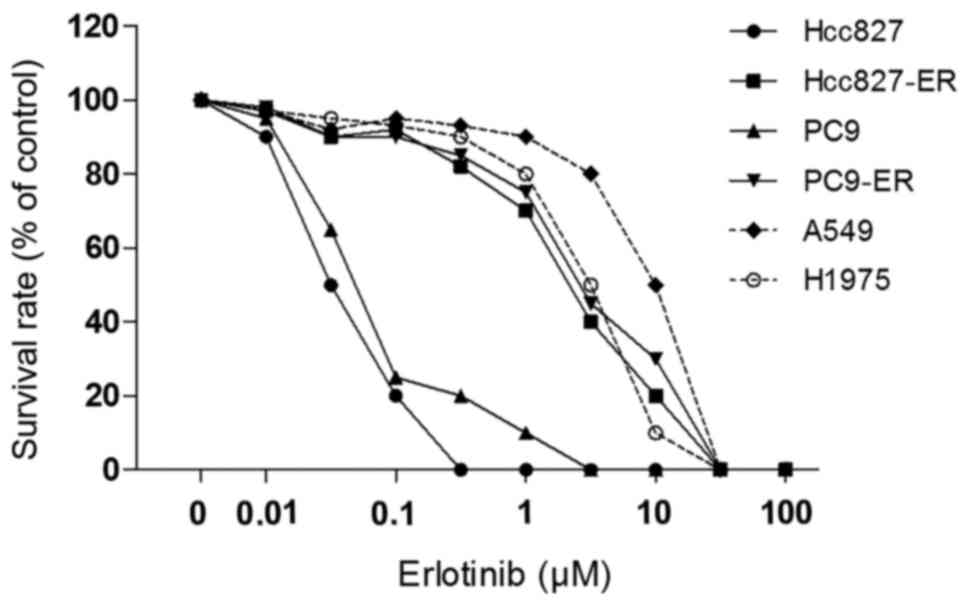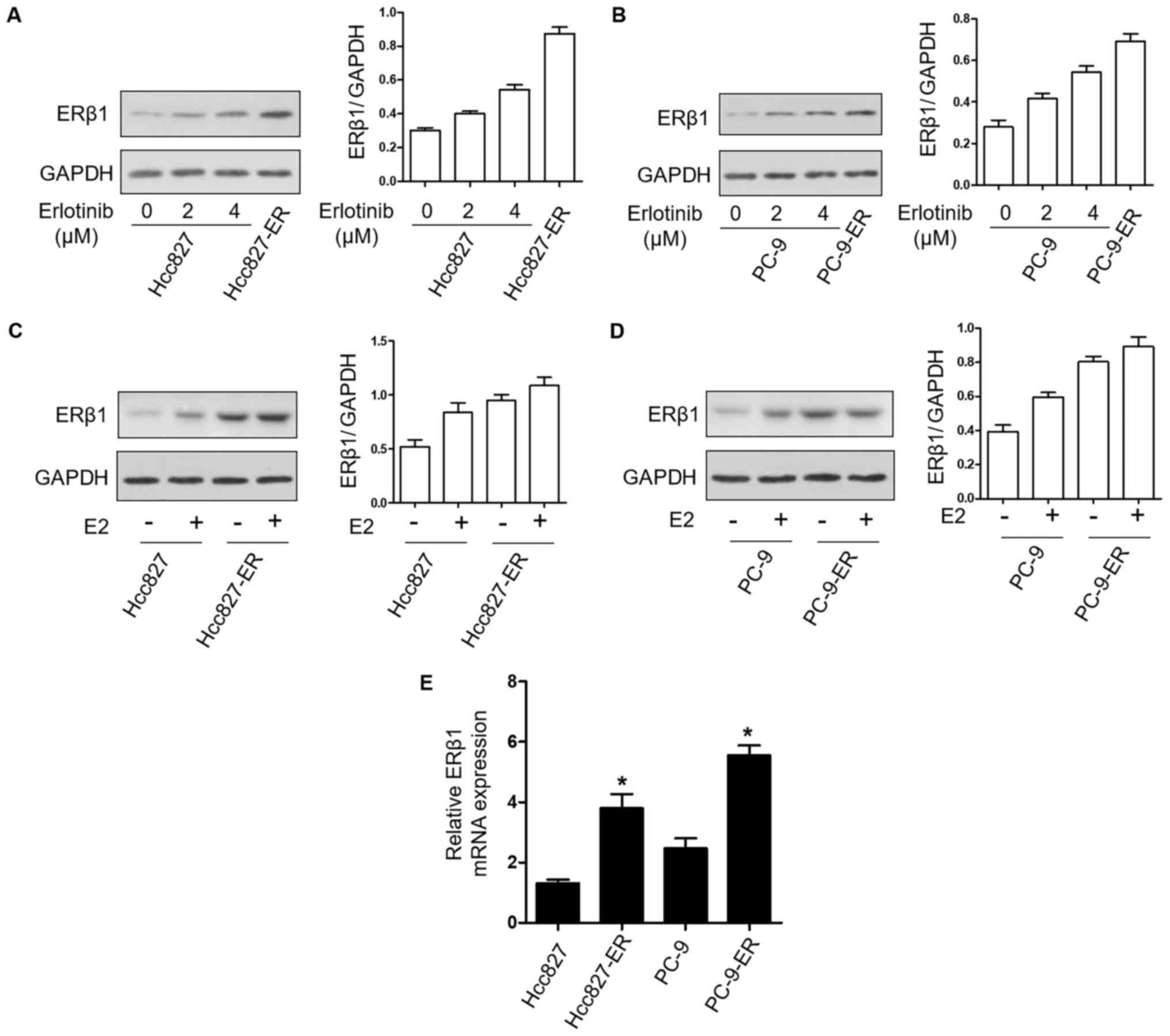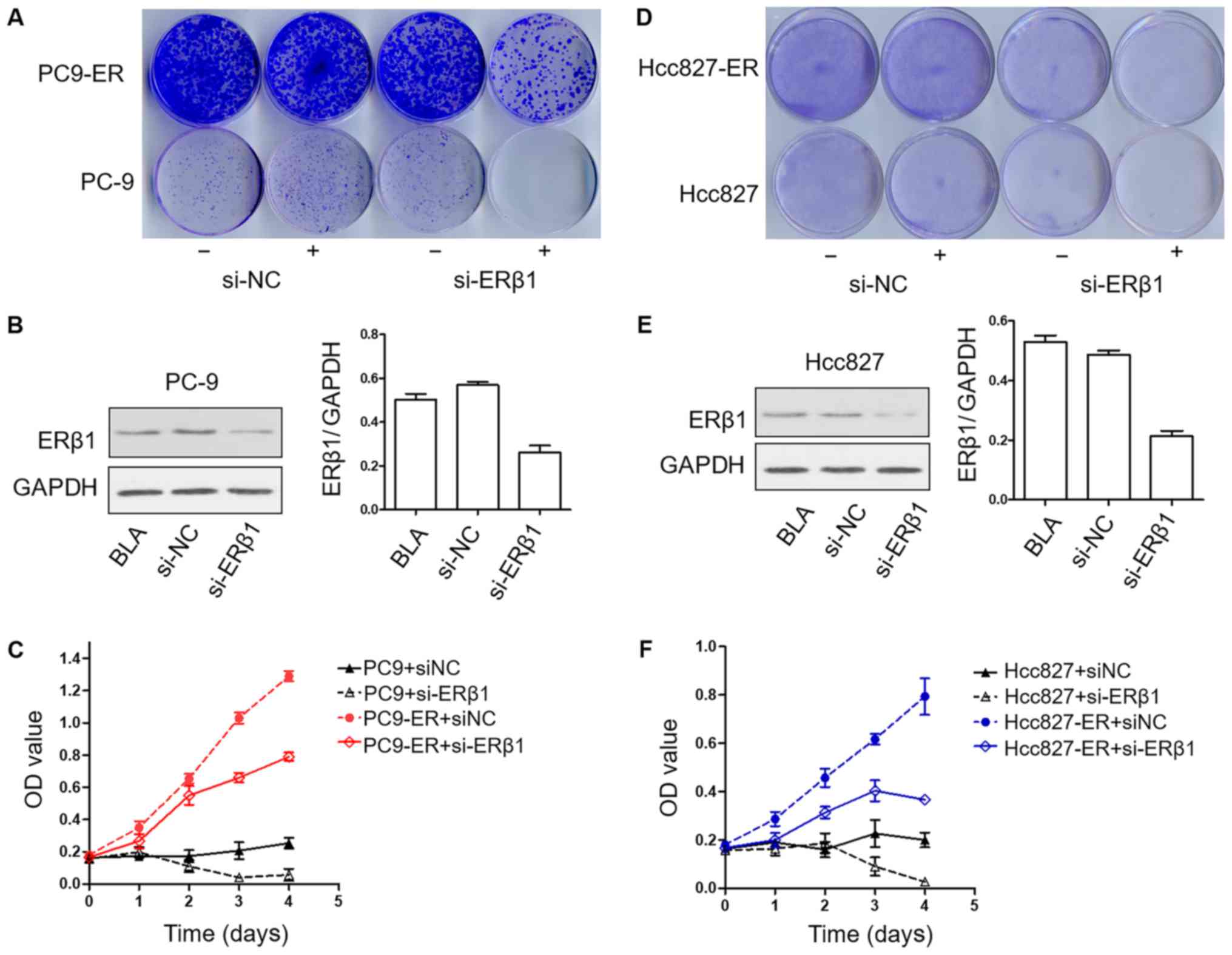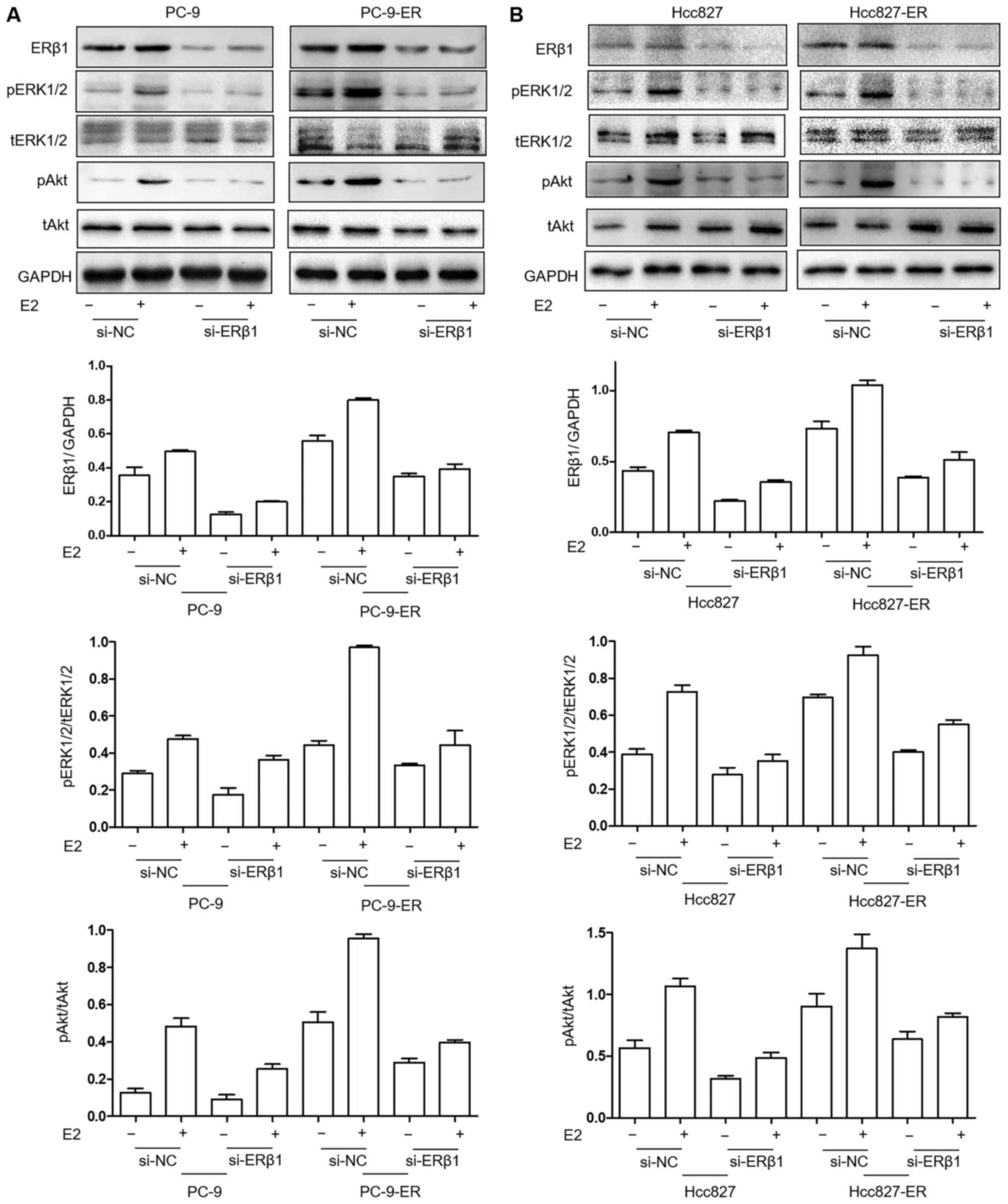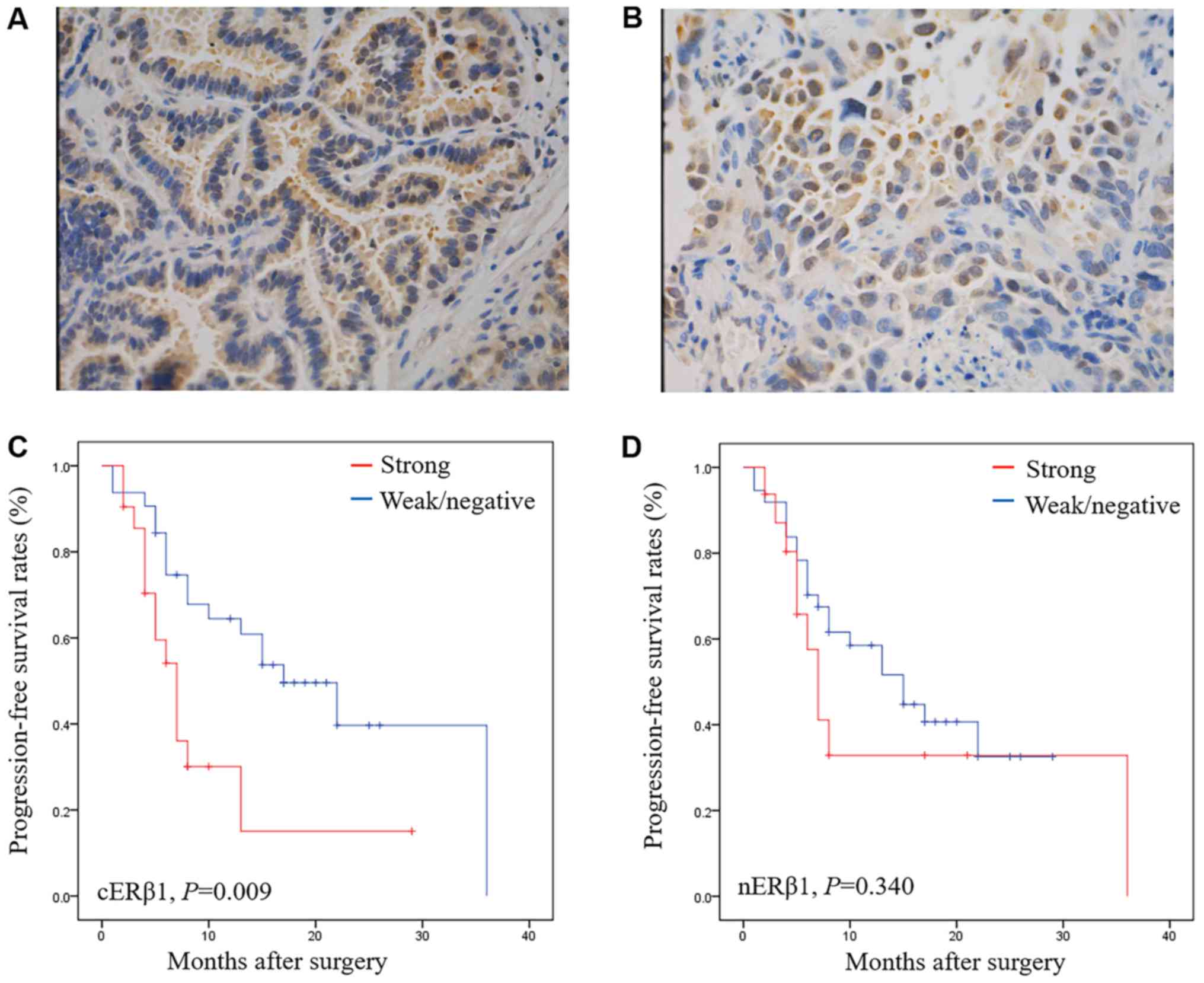Estrogen receptor β1 activation accelerates resistance to epidermal growth factor receptor-tyrosine kinase inhibitors in non-small cell lung cancer
- Authors:
- Published online on: January 4, 2018 https://doi.org/10.3892/or.2018.6186
- Pages: 1313-1321
Metrics: Total
Views: 0 (Spandidos Publications: | PMC Statistics: )
Total PDF Downloads: 0 (Spandidos Publications: | PMC Statistics: )
Abstract
Non-small cell lung cancer (NSCLC) is one of the leading causes of cancer-related deaths worldwide. Epidermal growth factor receptor-tyrosine kinase inhibitors (EGFR‑TKIs) have revolutionized the treatment of patients with advanced EGFR-mutant NSCLC. However, drug resistance eventually develops in the majority of patients despite an excellent initial response. The present study aimed to investigate the mechanism of acquired resistance to EGFR-TKIs and to explore strategies to overcome the resistance to EGFR-TKIs from a gender perspective. PC9 and Hcc827 cell lines, sensitized to EGFR-TKI, and secondary TKI-resistant PC9-ER (erlotinib resistant) and Hcc827-ER cell lines were evaluated for the expression of ERβ1. The proliferative ability of both cell lines was analyzed after transfection of siRNA-ERβ1 using Cell Counting Kit-8 and colony formation assays. Extracellular signal-regulated protein kinases 1 and 2 (ERK1/2) and Akt activation were detected. The co-inhibition efficiency of erlotinib and fulvestrant was analyzed in PC9-ER xenografts. The expression of ERβ1 was investigated in tumor tissues of EGFR-TKI-treated patients, and its correlation with clinicopathological factors and progression-free survival (PFS) was assessed. The expression of ERβ1 was upregulated secondary to EGFR-TKIs in PC9 and Hcc827 cell lines, with β-estradiol dependence. Both PC9-ER and Hcc827-ER cell lines were re-sensitized to erlotinib after downregulation of the expression of ERβ1. ERK1/2 and Akt pathways were activated following the silencing of the expression of ERβ1 in PC9-ER and Hcc827 cell lines. The co-treatment of erlotinib and fulvestrant exhibited better growth inhibitory efficiency compared with the treatment of each agent alone in PC9-ER-derived xenografts. Primary NSCLC samples of 53 patients treated with EGFR-TKIs were analyzed. ERβ1 was highly expressed, and the strong expression of cytoplasmic ERβ1 was related to a shorter PFS. In conclusion, ERβ1 was activated in EGFR-TKI secondary resistance. The downregulation of ERβ1 sensitized the cells to EGFR-TKIs. ERβ1 may be a key molecule in EGFR-TKI therapy. In addition, anti-ERβ1 treatment may reverse TKI resistance.



